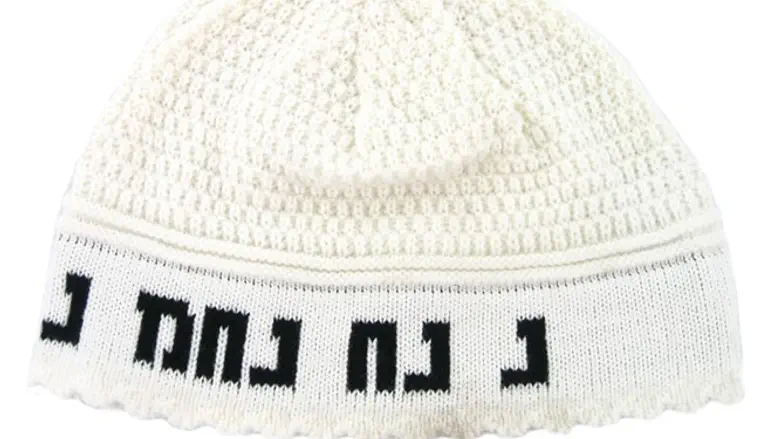
Do you have a kippah basket in your house? Or maybe it’s a box. If it’s anything like the ones I’ve seen it’s an eclectic mix of kippot, waiting for the errant Shabbat guest or those “mommy, where’s my kippa!?” moments. Kippot are a part of everyday life for observant Jews and a must have for Jewish ceremonies and synagogue.
Choosing a kippah more significant than matching your belt and shoes, isn’t it?
Once you’ve committed to wearing a kippah (or choosing your own in the case of kids!), the next challenge comes with choosing your kippah style. There are several kinds of kippot available, each with a different shape, design and meaning.
One of the most well-loved of kippot is the classic knitted one: a simple circular dome, knitted or crocheted and usually handmade, with a colorful base.
Kippot with shades of grey are one of the more popular color themes this year.
A less traditional approach to kippah design, and one which is often worn for special occasions like a wedding, is the modern kippah.
This embroidered kippah from Yair Emmanuel is a gorgeous blend of shades of blue.
Elaborate, artistic and eye-catching, this kippah style is usually crafted from luxurious fabrics like raw silk and suede and is certainly one to make you stand out in the crowd! A popular Jewish wedding favor is a silk or suede kippah with the wedding date and the bride's and groom’s names.
A kippah can also signify your affiliation with a specific stream of Judaism like this interesting frik style kippah.

Popularly worn by the Hassidic “Breslev” followers of Rabbi Yisroel Ber Odesser, this kippah style is an open crochet knit covering the whole head with a central tassel and the phrase: Na Nach Nachma Nachman Meuman along the bottom edge.
The Bucharian kippah has its origins in ancient central Asia and is now a popular choice for children, some Sephardic streams.
With its interesting shape, reminiscent of North African male headwear, this colorful and unique kippah features intricate embroidery and picturesque landscapes and are a wonderful choice for a celebration like a “henna” party before a wedding.
If you are looking to make a statement with your choice of kippah, then look no further than the lovely designs on these Patriotic kippot.

Blue and white knitted kippot are traditionally a display of Zionism and patriotism. Worn year-round for some, others like to put these on in the spring to as excitement builds for Israeli Independence Day.
Showcasing Jewish and Israeli imagery, these kippot attract attention with their designs including the Star of David, Jerusalem and even the IDF. The "Patriotic" kippah is an excellent choice for a gift from Israel and equally can be worn to a special celebration.
Finally, let’s remember that children also wear kippot. Some Orthodox boys are required to wear a black velvet kippah, but now they have an array of interesting designs to choose from while still adhering to their dress code, including pictures of trains and toys. Children like the simpler, smaller designs which can be clipped into their hair, allowing them to run around worry-free!
The kippah, yarmulke, or skullcap has as many historical references as it does names. The arguments surrounding the roots of kippah wearing are even more complex, with some scholars insisting that the kippah must be worn at all times to show devotion to God, and others questioning the biblical links, declaring that the kippah must only be worn for ceremonies including weddings, funerals, and festivals.
With such a wide variety of choices available of kippot, you can match your headwear to your personal style and allow your kippah-personality to shine through. And there’s nothing wrong with mixing it up – there are kippah wearers who prefer the same thing everyday and others who wouldn’t dream of such a thing. When you choose your own kippah or a kippah gift, it’s truly special. Bring a bit of your own personality and style to how you perform your commitments to God.




